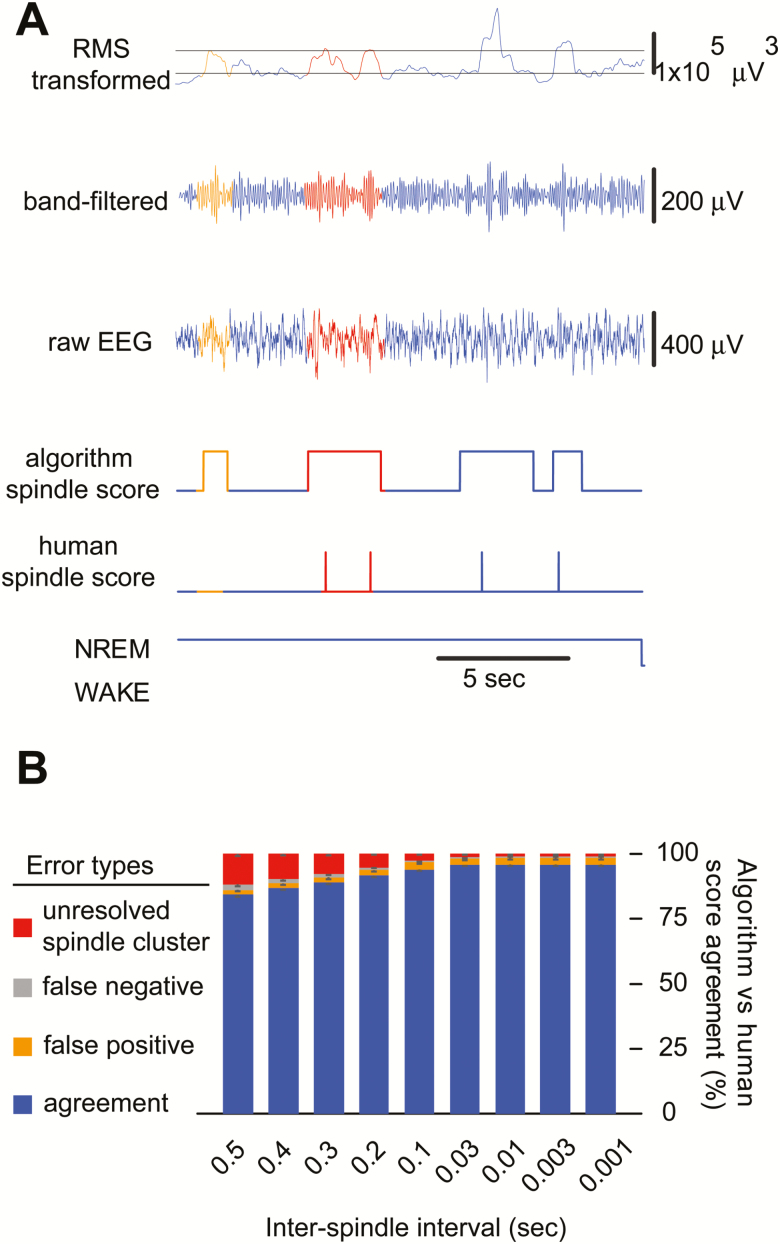Figure 2.
Spindle detection errors can be reduced by shortening the ISI. (A) A representative stretch of EEG data comparing manual versus automated spindle scoring demonstrates that unresolved spindle clusters are a major source of spindle detection disagreements between the algorithm and human scorers, including: (1) false positives (orange), which were events not scored by human scorer but scored by automated detection, such discrepancies are typical when the algorithm determines the trace to reach the upper threshold but the human cannot; (2) unresolved spindle clusters (red), which were events scored as multiple events by human scorer but as a single event by automated detection. These discrepancies arise from long ISI settings. Minimal error was observed due to false negatives (gray). (B) Bar graph shows percent agreement between manual and algorithmic spindle detections and denotes error type contributing to inconsistency. Reducing the minimum time interval used for the ISI criteria in automated detection reduced human-algorithm error from unresolved spindle clusters (4-hour data, six mice).

